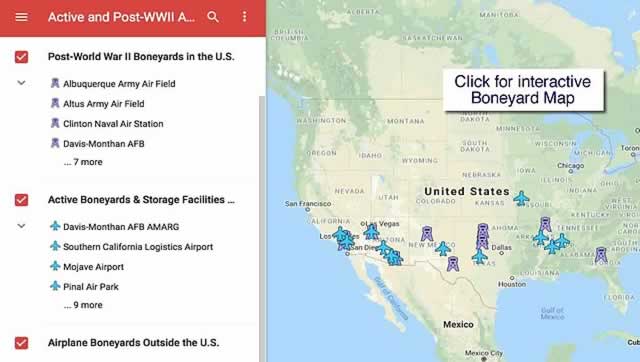
Post-WWII Military Airplane Scrapping and Smelting Process
Contractors were hired for aircraft scrapping at a number of facilities after World War II.
Active duty military personnel typically flew the aircraft into an assigned airport, and civilian employees would handle parking and classification. To accommodate the large numbers of employees, tent cities were erected on site. In subsequent months, even brand new aircraft directly from assembly lines were disposed of at Kingman.
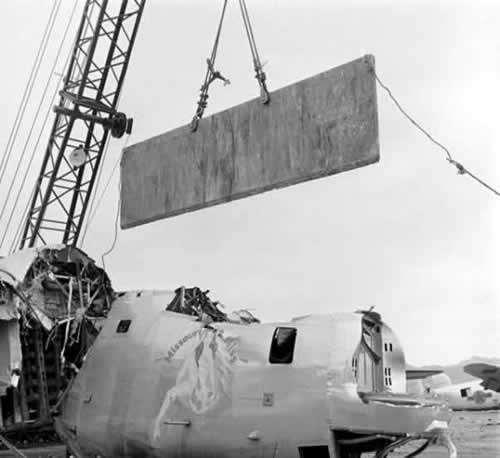 Consolidated B-24 Liberator "Missouri Miss" meets the guillotine at Kingman Army Air Field and Storage Depot 41 |
Fuel was drained from the aircraft and sold. Aircraft engines were then removed and placed in rows on the desert floor.
By the time the planes reached Kingman, most of the ordnance (predominantly .50 cal machine guns and Norden Bombsights) had already been removed at other temporary storage depots. However, a few planes did arrive with some machine guns and a few Norden Bombsights, which were temporarily and securely stored. The guns were retrieved by the government, but the Nordens were 'demilled' using a sledgehammer.
Interior items of the aircraft such as radios, oxygen equipment, handguns, manuals, life rafts, fire extinguishers and instruments were removed.
The main aircraft airframe was then sliced into major pieces using a guillotine. Some hand cutting of smaller parts was also done.
The final step was placing parts into the smelter, or furnace, for melting. Three furnaces were operated at Kingman for melting about 70% of an airplane's metal components into ingots. The furnaces were run 24 hours a day, and could consume up to 35 aircraft a day.
The Wunderlich contract at Kingman was successful, and resulted in the ultimate recovery of significant resources:
- 46 millions pounds of aluminum
- 6 million pounds of aluminum from engines
- 5 million pounds of aluminum propellors
- 21 million pounds of steel
- 1.6 million gallons of aviation fuel
- 256,000 gallons of oil
A total of 85 reconnaissance aircraft, 615 fighters, 54 light bombers, 266 medium bombers and 4,463 heavy bombers were disposed of at Kingman. These 5,483 aircraft scrapped by Wunderlich at Kingman generated $7.5 million in gross income.
By July of 1948, less than three years since the end of WWII hostilities, the job was done. A huge part of the American airpower fleet had been reduced to ingots. Storage Depot 41 and Kingman was returned to the county as a municipal airport.
See the photo essay below on this page with photos of the scrapping and smelting process used at Kingman.
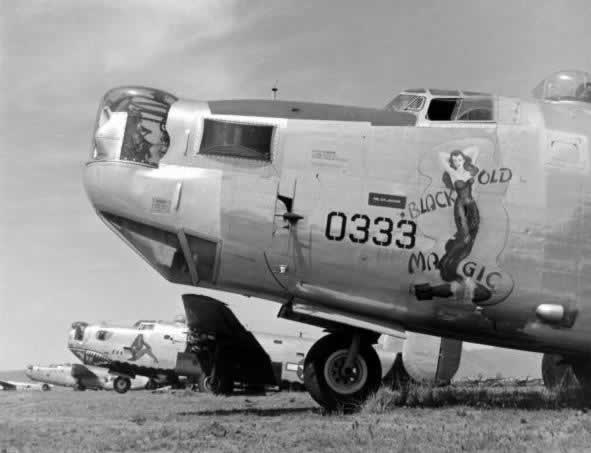 Rows of B-24 Liberators await the scrap heap at Kingman AAF in Arizona "Old Black Magic" 0333 in the foreground as seen in LIFE Magazine |
WWII Bomber Scrapping and Melting at the Kingman Army Air Field boneyard in Arizona
Ford B-24L-15-FO Liberator "Mabel's Labels" ... "Gimme a Great Big Smile!" S/N 44-49854 ... Served with the 64th Bombardment Squadron, 43rd Bomb Group, 5th Air Force Shown below with engines removed and awaiting the guillotine and smelter |
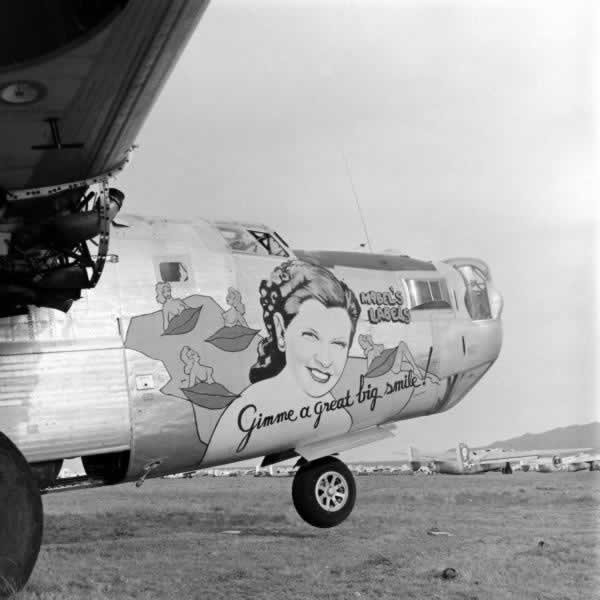 |
Rows of aircraft engines removed from surplus B-17 and B-24 bombers at the Kingman AAF boneyard |
 |
Once cut in pieces, aircraft remnants are moved to the smelter (in the distance) |
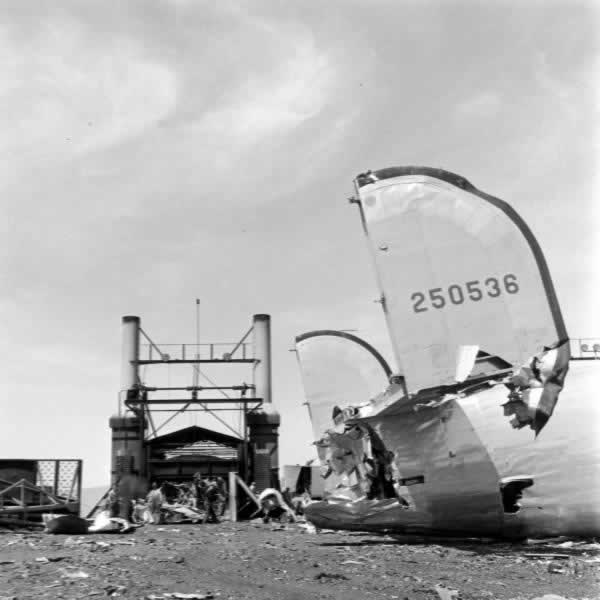 |
|
Stacks of aluminum ingots ... the remains of the great American World War II bomber fleet |
 |
Where Airliners Go to Die ... and Be Recycled
 |
|||
 |
 |
 |
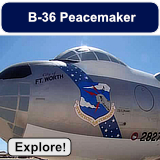 |
Map of locations of active and post-WWII airplane boneyards and plane storage facilities in the United States

